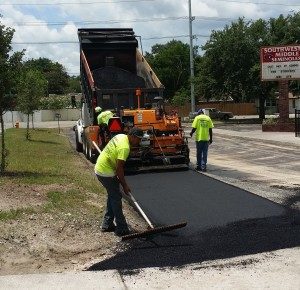The smart Trick of A1 Professional Asphalt & Sealing Llc That Nobody is Talking About
The smart Trick of A1 Professional Asphalt & Sealing Llc That Nobody is Talking About
Blog Article
Some Known Incorrect Statements About A1 Professional Asphalt & Sealing Llc
Table of ContentsThe smart Trick of A1 Professional Asphalt & Sealing Llc That Nobody is DiscussingA1 Professional Asphalt & Sealing Llc for DummiesThe 2-Minute Rule for A1 Professional Asphalt & Sealing LlcThe 7-Second Trick For A1 Professional Asphalt & Sealing LlcThe Single Strategy To Use For A1 Professional Asphalt & Sealing Llc

The oil in an automobile engine is not just oil. The REOB has all the ingredients that were in the waste oil as well as the wear steels from the engine (generally iron and copper).
However, by making many blends utilizing various REOB samples and different asphalt binders, the variants mainly can be balanced out. A number of States gave examples of known REOB composition to TFHRC scientists, who analyzed the samples to compare the percentage of included (understood) REOB to the located (checked) quantity. The analyses showed an equivalent percentage of added and located REOB.
A1 Professional Asphalt & Sealing Llc Things To Know Before You Get This
None of those States realized that the asphalt they were purchasing contained REOB. One State urged its samples had no REOB - https://www.tumblr.com/a1asphaltseal/748214668409044992/the-a1-professional-asphalt-sealing-llc-family?source=share.
Of the 1,532 examples tested, 12 percent contained REOB, and some contained considerably high levels of it at 1020 percent. The highest degree was 34 percent in an example from Texas, which TxDOT had used in a patching compound. This screening additionally exposed the presence of phosphoric acid in 11 percent of the examples, and 2 percent contained ground tire rubber.
2 years ago at TRB's yearly meeting, the Federal scientists held an REOB workshop and offered the searchings for of their research laboratory examinations to a standing room-only crowd. Some firms do not especially ban REOB, they do impose physical tests that preclude its useeffectively a ban. Others do not outlaw it by specification, but have contracts with asphalt providers to prevent using REOB
Top Guidelines Of A1 Professional Asphalt & Sealing Llc
A handful do permit REOB, some within particular limits. As an example, Ohio and Texas restriction degrees to much less than 5 percent of the asphalt. To create a reliable test approach that all States can use, the TFHRC researchers established a round-robin examination plan. The individuals are 11 State freeway firms (Illinois, Massachusetts, Minnesota, Mississippi, Montana, North Carolina, Oklahoma, South Carolina, Texas, Vermont, and Wyoming), 2 independent testing laboratories, the Ministry of Transportation in Ontario, Queen's College in Ontario, and an Ontario paving service provider.
The participants are testing the examples separately making use of the guidelines provided by the TFHRC scientists. The output will certainly be a recommended AASHTO examination method that any type of State can take on and use.
The pavement with REOB, which lies 0.6 mile (1 kilometer) from the pavement without REOB, has identical subgrade, website traffic density, and environment. The segment of Highway655 with 5 to 10 percent REOB revealed substantial fracturing. In this example, the visibility of REOB was the recognized reason for fracturing at a reduced temperature levels.
An area of examination sidewalk in Minnesota (MN1-4) found to contain REOB also cracked too soon. The pavement performed well for the initial 3 to 4 years, but after that began to break.
The Facts About A1 Professional Asphalt & Sealing Llc Uncovered
The tests were not extensive, yet they showed that at degrees of 6 percent or more, the tensile stamina of the asphalt went down substantially. At a degree of 3.5 percent REOB, the variation in the physical examination approaches was more than the effect of REOB. Actually, it was difficult for researchers to evaluate whether REOB existed.

One binder specification considered is the distinction in between the low temperature crucial spec temperature level for rigidity (S) in the bending beam rheometer and the flexing beam of light rheometer creep incline (m-value) noted as Tcritical. 2 independent research study groups, one from AASHTO and the other from the Asphalt Institute, wrapped up that more research study is required on the use of REOB in asphalt.
Formerly, all asphalt testing measured engineering buildings such as tightness. These examinations do not reveal what products had actually been contributed to the asphalt. One sample obtained during the TFHRC study had an extremely unusual analysis. The example had the following examination outcomes: Superpave PG 64-28 with a heat grade of 67.3 Tcritical on the bending beam rheometer was 6.7 degrees Celsius.

Little Known Questions About A1 Professional Asphalt & Sealing Llc.
These results demonstrate there are weaknesses in the standard engineering screening protocols that may be manipulated. The manufacturer might have a financial advantage and the item passes all the standardized examinations, yet the product might not be helpful to guaranteeing long-term efficiency. To address this concern and the growth of brand-new asphalt blog here additives and extenders, TFHRC is beginning a research study program to utilize portable spectroscopic devices, x-ray fluorescence spectroscopy, and Fourier change infrared spectroscopy to enable analyses to be performed in the area instead of needing to take samples back to the lab.
Report this page